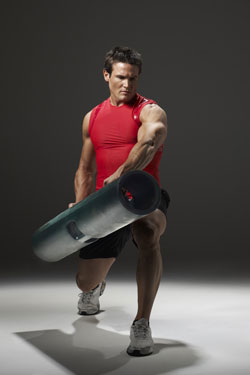Kinetic intelligence
 I have had the immense pleasure to work alongside Tom Myers (author of Anatomy Trains, among other grand achievements) in various different projects.
I have had the immense pleasure to work alongside Tom Myers (author of Anatomy Trains, among other grand achievements) in various different projects.
One such project was an advisory role that we both shared (along with 12 others from the medical and allied health fields) for a large, leading fitness and wellness company. Part of our role involved discussions relating to current trends, and areas of concern for all aspects of health and wellness. Many opinions are shared and feedback given, all highly relevant and extremely enlightening.
At one of our meetings, when it came Tom’s turn to share his views, he eloquently explained the following idea, which I find to be extremely timely and incredibly important:
We have all learned about IQ and, to a lesser degree, EQ (emotional quotient). IQ is the concept around the intelligence quotient, a way in which we can assess an individual’s ability to assimilate, process, and retrieve information using cognitive faculties – essentially our 'intelligence well-being'. The higher the IQ, the more capacity and ability we have with cognitive functions. The concept of IQ has led to ways in which we have scrutinised and ranked student’s applications for college, right down to how we judge a person’s credibility (rightfully or wrongfully). The concept of IQ has now entered common usage.
EQ is the concept of emotional quotient (or emotional intelligence). It is a concept often used by psychologists/psychiatrists to determine a person’s emotional well-being. There are varying views on the strength of assessing EQ, nonetheless it is a model which anchors into the importance of having emotional well-being.
KQ is our kinetic quotient; what Myers calls our 'kinetic intelligence' or 'kinetic well-being'. This is our ability to ‘move’, consistent to human design and function. Movement of our bodies is fundamental to health, vitality and our survival.
Survival means something much different in today’s society and, ironically, there exists an inverse relationship between technology and KQ. As technology improves the convenience of our lives, it deteriorates the body’s intelligence for movement – KQ. With its conveniences, technology has allowed us to eliminate so many aspects of movement in our daily lives; we go from computer desk to couch in front of the television and we are all sitting entirely too much.
It is not hyperbole to assert that, currently, our bodies are in a state of decay, rotting from lack of movement. Movement is critical to all of the body’s functions and serves as a panacea to many ailments that we face.
Top killers (i.e., heart disease, chronic lower respiratory diseases, diabetes, stroke, etc.) in developed countries would certainly not be the top killers if more movement was a part of our lives. Technology has built machines to replace human labour, however in doing so, has created a world in which we lack the requisite movement to thrive.
This phenomenon is happening in our schools as well. Schools are replacing physical education with more English, history, maths and science. ‘Physical education’ does not just represent gym class, but includes art and music. Gym, art and music involve expressions of movement with creativity and are necessary for proper cognitive development.
We need to stop and think. We need to think about how our environments are affecting our health and development. How can we infuse KQ into our daily routine? Going to the gym and working out is not enough. We need to reflect on howwe are working out. Most of what occurs in the gym is not movement. We may move a limb, joint or series of joints in repetition of one kind of movement, but rare is it that we actually move anywhere in any meaningful way.
Machines make us run on the spot and cycle without going anywhere. Exercises which involve sitting or requiring the feet to be planted are void of real movement. These exercises have benefits, yes, however it is my opinion that we must incorporate actual movement (i.e., moving across the floor/ground in more than one direction), as well as incorporate drills and tools that actually encourage full-body movement.
I am grateful for programmes such as Parkour, Global Bodyweight Training, Mov Nat, Primal Mov, Ginastica Natural (and more), as these are examples of concepts which are rooted in the notion of global human movement (i.e., movements which are full body and task driven). I am a strong and passionate advocate of these programmes and I am glad to see the rise in attention that they are receiving.
We also need to incorporate more movement in our daily work and home lives. Studies show that, even if a person exercises every morning but sits for the rest of the day, his or her health is still at risk from many of the most common chronic diseases (see the book The End of Illness by David Agus MD).
As the creator of ViPR, the more I hear voices supporting the notion of movement and KQ, the more I believe we can sustain an authentic engagement (... or re-engagement) of physical education that is consistent with our biology. Movement is fundamental and necessary. It must be performed well and with efficiency and is something that must be done on a regular basis (both throughout the day and every day). Learning to move well and learning to load movement is what we call building a body for vitality and performance through the re-conditioning and engagement of the biological system.
To view more ViPR content then click here to register – it’s absolutely free